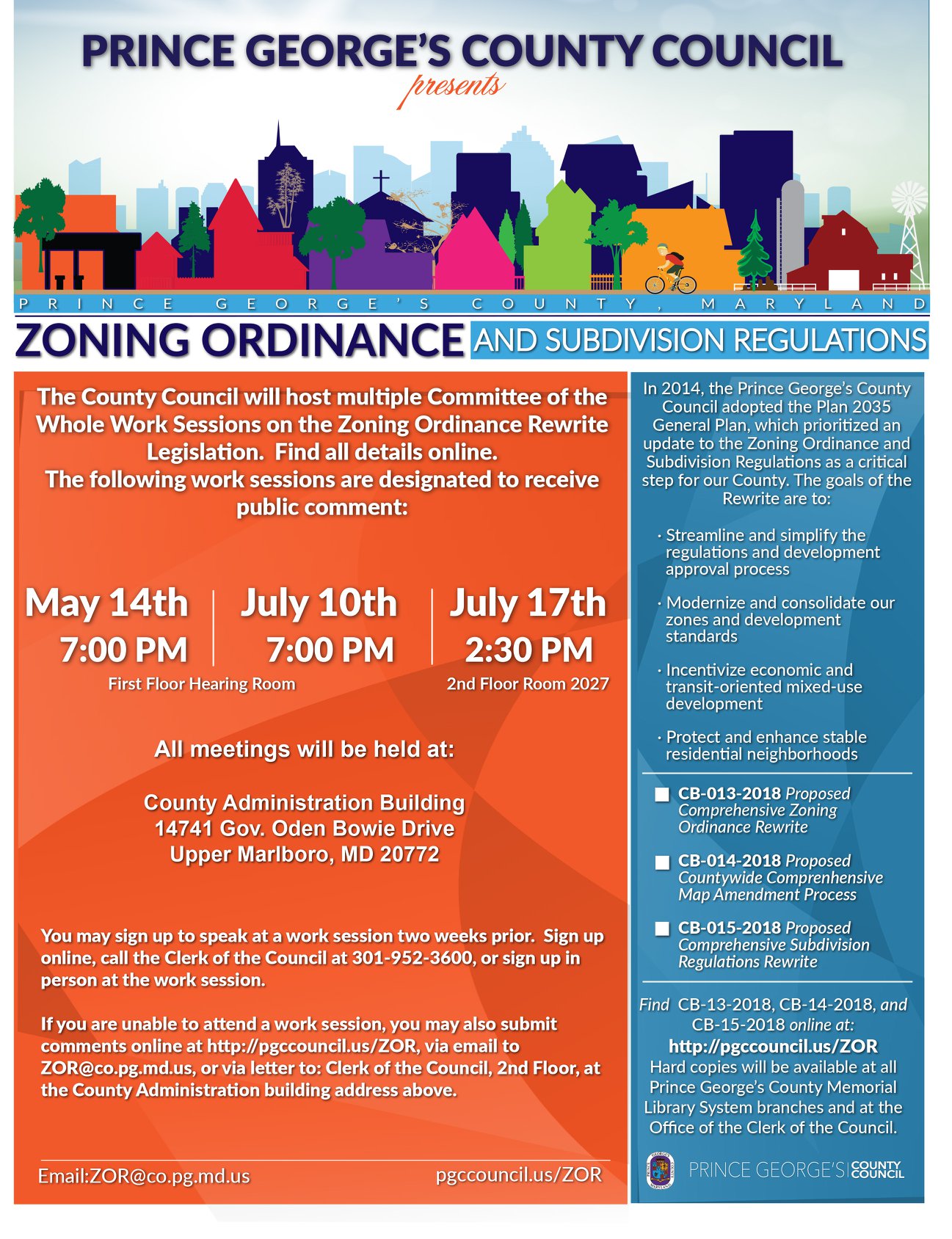County Council Adopts Legislation Moving Countywide Sectional Map Amendment Process Forward

The Prince George’s County Council, during the final session before summer recess, voted unanimously on Tuesday, July 23, 2019, to approve a Council Resolution initiating the Countywide Sectional Map Amendment (CMA) process.
CR-27-2019, approved and submitted by the Maryland-National Capital Park and Planning Commission (M-NCPPC), addresses the preparation of a Countywide Sectional Map Amendment and approval of Goals, Concepts and Guidelines; and the Public Participation Program to apply the zoning classifications in the approved replacement Zoning Ordinance enacted in 2018. In other action, the Council approved Council Resolution CR-26-2019 and introduced CB-11-2019, which will allow for an additional public comment period during the CMA process.
The Countywide Sectional Map Amendment is required to implement the Zoning and Subdivision Ordinances passed by the Council in 2018 following over four years of review. The new Zoning Ordinance aims to streamline procedures, reduce obstacles to achieving the economic goals of the County’s Adopted General Plan (Plan 2035), enhance user-friendliness, encourage public input into the development review process, consolidate and simplify zones and uses, and incentivize development at targeted growth locations.
Prince George’s County Council Chair Todd M. Turner (D) – District 4, says Tuesday’s adoption of the CMA legislation is a critical step forward as the County looks to implement the County’s new Zoning Laws.
“Last year, the District Council passed the County’s new Zoning Ordinance and Subdivision Regulations following years of work to update the County’s land use policy, and today’s adoption of CR-26-2019 and CR-27-201, along with CB-11-2019, moves us closer to implementing new zoning laws in Prince George’s County, which are long overdue,” said Council Chair Turner.
M-NCPPC will now begin the approximately eighteen-month process, including notification to all County property owners, community outreach and stakeholder engagement, joint public hearing(s) and Planning Department staff, Planning Board and County Council review. Click HERE for more information on the CMA.

 On Tuesday, October 23rd, the Prince George’s County Council voted to approve a new Zoning Ordinance and Subdivision Regulations for County. Updating the County’s Zoning Ordinance is a complex process, and one of the Council’s most important undertakings as the County’s land use authority.
On Tuesday, October 23rd, the Prince George’s County Council voted to approve a new Zoning Ordinance and Subdivision Regulations for County. Updating the County’s Zoning Ordinance is a complex process, and one of the Council’s most important undertakings as the County’s land use authority.


